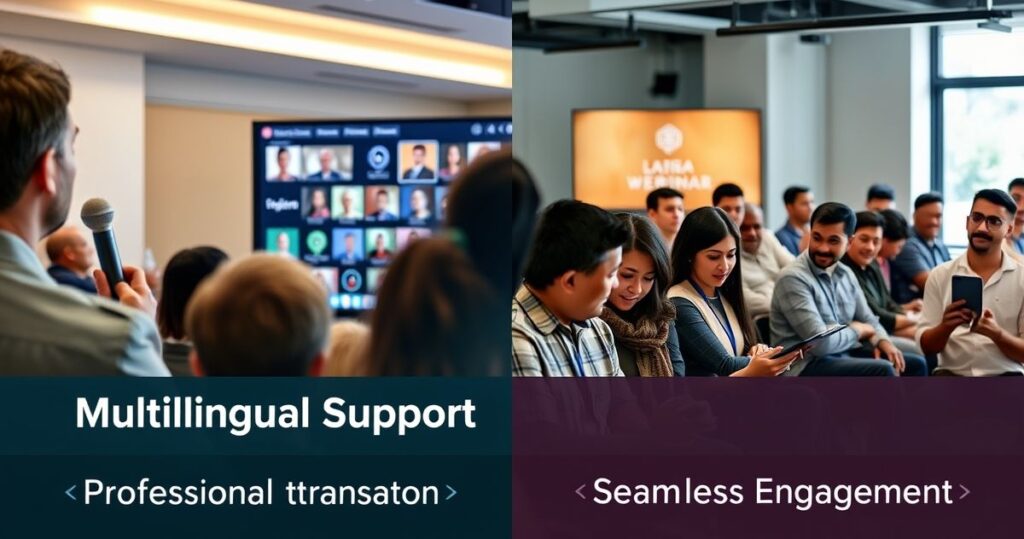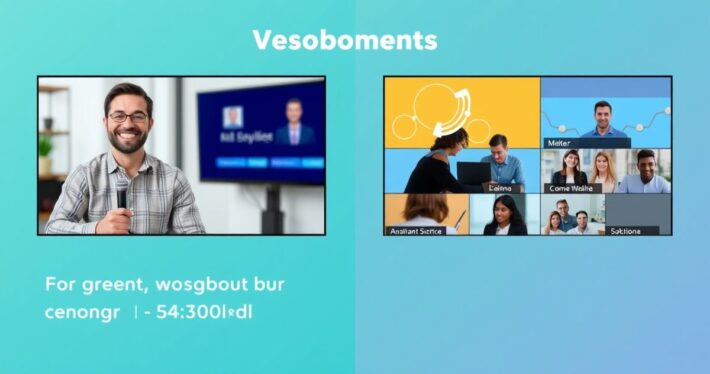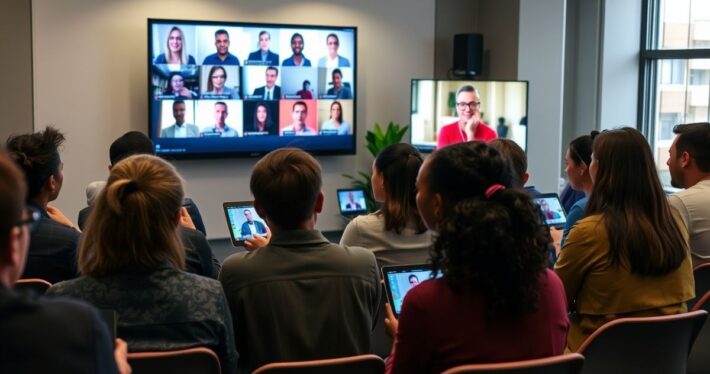The ultimate checklist for multilingual webinar success.

The Ultimate Checklist for Multilingual Webinar Success in 2023
Webinars have become a cornerstone of digital marketing, but when your audience speaks multiple languages, the game changes. Hosting a multilingual webinar isn’t just about translation—it’s about cultural nuance, seamless technology, and delivering value to a diverse audience. If you’re ready to take your webinar strategy global, this ultimate checklist will guide you every step of the way.
Why Multilingual Webinars Matter
Let’s face it: the world is more connected than ever. Whether you’re targeting non-native English speakers, expanding into new markets, or catering to a multicultural audience, multilingual webinars can significantly boost your reach and engagement. According to a report by CSA Research, 76% of consumers prefer buying products in their native language. That’s a massive opportunity for businesses that can tap into global markets effectively.
But here’s the catch: a poorly executed multilingual webinar can do more harm than good. Miscommunications, technical glitches, or cultural missteps can alienate your audience. That’s why a structured approach is essential.
The Ultimate Multilingual Webinar Checklist
1. Define Your Goals and Audience
Before diving into the logistics, ask yourself: Why are you hosting this webinar? Is it to generate leads, educate customers, or promote a new product? Once you’ve nailed down your goals, identify your target audience. Are you speaking to native speakers, bilingual audiences, or multilingual groups with varying language proficiencies?
Pro Tip: Segment your audience by language and tailor your content accordingly. A one-size-fits-all approach rarely works in multilingual settings.
2. Choose the Right Platform
Not all webinar platforms are created equal when it comes to multilingual support. Look for features like:
- Real-time translation or captions
- Multi-language breakout rooms
- Integration with translation tools (e.g., Google Translate API)
Platforms like Zoom Webinar, Webex Events, and HeySummit offer robust multilingual capabilities. Test your chosen platform thoroughly to avoid last-minute surprises.
3. Invest in Professional Translation and Localization
Google Translate won’t cut it here. Professional translation ensures accuracy, but localization takes it a step further by adapting your content to cultural contexts. For example, humor, idioms, and cultural references often don’t translate well.
Real-World Example: When Coca-Cola launched in China, they initially translated their slogan as “Bite the Wax Tadpole.” Needless to say, it didn’t resonate. A localized version—“Taste the Feeling”—was far more effective.
Pro Tip: Hire native speakers or localization experts to review your content.
4. Create Multilingual Slide Decks
Your slides should support your message visually while being accessible to all attendees. Tools like Canva or PowerPoint allow you to create multilingual slide decks with ease.
Use clear, concise language and avoid jargon. Incorporate visuals that transcend language barriers, such as infographics, charts, and icons.
Pro Tip: Use AI-powered tools like Slide Outline Creator to structure your slides for maximum engagement across languages.
5. Optimize Your Rehearsals
Rehearsing is crucial for any webinar, but multilingual events require extra prep. Practice delivering your content in each language, paying attention to pronunciation and pacing.
Pro Tip: Record your rehearsals and review them with native speakers to identify areas for improvement.
6. Engage Your Audience
Engagement is the secret sauce of any successful webinar. For multilingual events, consider:
- Live polls in multiple languages
- Q&A sessions moderated by bilingual hosts
- Chat moderation to address questions in real-time
Pro Tip: Use a High-Value Bonus Brainstormer to create exclusive, language-specific offers that incentivize participation.
7. Leverage Technology for Seamless Execution
Technology can make or break your webinar. Ensure you have:
- Reliable internet connections for all speakers
- Backup plans for technical issues
- A dedicated tech team to handle troubleshooting
Pro Tip: Use a Risk-Reversal/Guarantee Generator to create offers that make participation a no-brainer, reducing friction across language barriers.
8. Follow Up Across Languages
Your work isn’t done when the webinar ends. Send follow-up emails, surveys, and resources in the languages your attendees prefer.
Pro Tip: Use analytics to track which language groups engaged the most and tailor future content accordingly.
Common Pitfalls (And How to Avoid Them)
Multilingual webinars come with unique challenges. Here’s how to avoid the most common mistakes:
Pitfall 1: Overloading Content
Trying to cover too much in one session can overwhelm attendees. Stick to one or two key messages per webinar.
Pitfall 2: Ignoring Cultural Differences
What works in one culture may flop in another. Research cultural norms and preferences beforehand.
Pitfall 3: Poor Time Zone Planning
Scheduling a webinar that’s convenient for you but inconvenient for your audience is a rookie mistake. Use tools like World Time Buddy to find optimal times.
Real-World Success Story: How Company X Nailed Multilingual Webinars
Company X, a global SaaS provider, wanted to expand into Latin America. They hosted a series of multilingual webinars in Spanish and Portuguese, using professional translators and localized content.
The result? A 40% increase in qualified leads from the region, with attendees praising the seamless experience and culturally relevant content.
The Bottom Line
Multilingual webinars are a powerful tool for global marketing, but they require careful planning and execution. By following this ultimate checklist, you’ll be well-equipped to engage, educate, and convert audiences across language barriers.
Now, here’s a question for you: What’s the first step you’ll take to make your next webinar truly global?
Feature-image-description
A dynamic split-screen image showing a diverse audience attending a webinar in multiple languages. On the left, a presenter speaks into a microphone, while on the right, attendees from different cultures engage with the content on their devices. Text overlays highlight key elements like “Multilingual Support,” “Professional Translation,” and “Seamless Engagement.”



